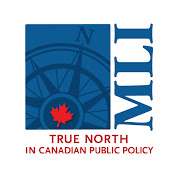If you’re solely focused on driving immediate sales, you’re missing out on a significant opportunity for long-term growth. Micro conversions are the real game-changer for sustained success. Why? Because less than 3% of your audience is ready to make a purchase today. That leaves a massive 97% who are unaware of your brand, but here’s the exciting part—this is your untapped goldmine.
Think about it. Most businesses focus on closing the deal with that small 3%, while the other 97% drifts away, unengaged. The truth is, those potential buyers may not be in the market now, but they’ll need a solution eventually. And if you can nurture that relationship with small, strategic touchpoints, your brand will be top of mind when they’re ready to buy.
These touchpoints can be as simple as getting someone to sign up for an email newsletter, follow your social media, or download a free resource. Each of these actions is what we call a micro conversion—seemingly small steps that bring the customer closer to you and away from your competitors. These micro conversions are often undervalued because they don’t deliver immediate revenue. However, they keep your brand relevant and build trust over time.
For example, a customer might first interact with your business through a blog post or social media content. They aren’t ready to make a purchase yet, but you’ve gained their attention. By providing ongoing value—whether through email campaigns, webinars, or targeted social media content—you increase your chances of converting them when they’re ready to buy.
The importance of nurturing this 97% can’t be overstated. They represent your future sales pipeline. Just like in industrial or B2B sales, the customer journey often involves longer sales cycles, but that’s exactly where micro conversions shine. They build the foundation of trust, slowly warming up leads over time. This strategy applies especially to complex industries where potential buyers need more education, reassurance, and repeated interactions before they feel comfortable making a decision.
For example, at Optimum7, we’ve helped B2B companies generate significant ROI by focusing on these micro conversions. One of our clients in the industrial supply space saw a 20% increase in sales after implementing a lead nurturing strategy that targeted micro conversions through paid LinkedIn ads, email marketing, and segmented content strategies.
So, what happens when your competitors focus only on closing deals, while you’re nurturing your future customers? When the 97% are ready to make a purchase, they’ll choose the brand that’s been consistently adding value to their journey. That’s how you lock in long-term growth while others focus on short-term wins.
The key to success is having a system in place to track these micro conversions. Tools like CRM systems or marketing automation platforms can help ensure that every interaction with your audience moves them closer to becoming a loyal customer. This system is especially critical in industries with complex sales cycles, such as manufacturing, technology, or industrial supplies.
Paid advertising also plays a role in driving micro conversions. While paid ads are often associated with pushing for direct sales, consider using them to promote free content, webinars, or downloadable resources. These ads won’t lead to an immediate sale, but they serve as powerful touchpoints that keep your audience engaged and coming back.
In essence, don’t wait for your audience to come to you when they’re ready to buy. Stay present and relevant by building relationships with small, meaningful actions that eventually lead to conversions. Micro conversions are your ticket to long-term success—keep them engaged, and when the time comes, they’ll choose you over your competitors.
#MicroConversions #CustomerEngagement #LeadNurturing #ConversionStrategy #LongTermGrowth #CustomerRetention #DigitalMarketing #duraninci #optimum7










![Hanukkah starts this year on Christmas Day NBC 6 South Florida [Video]](https://marketingprohub.com/wp-content/uploads/2024/12/mp_802955_0_AP24355567835674jpg.jpg)
![NEXE Innovations expands U.S. presence with second delivery of compostable coffee pods to EKOCUPS [Video]](https://marketingprohub.com/wp-content/uploads/2024/12/mp_797309_0_0jpg.jpg)
![Letter to the editor: Embrace our schools [Video]](https://marketingprohub.com/wp-content/uploads/2024/03/mp_410774_0_6262aa28f2fd2previewjpg.jpg)
![Michael van Gerwen drops hint as to how underdog could distract Luke Littler in World Darts Championship showdown [Video]](https://marketingprohub.com/wp-content/uploads/2024/12/mp_802952_0_newspresscollaged3wztn3ze1734789446744jpg.jpg)
